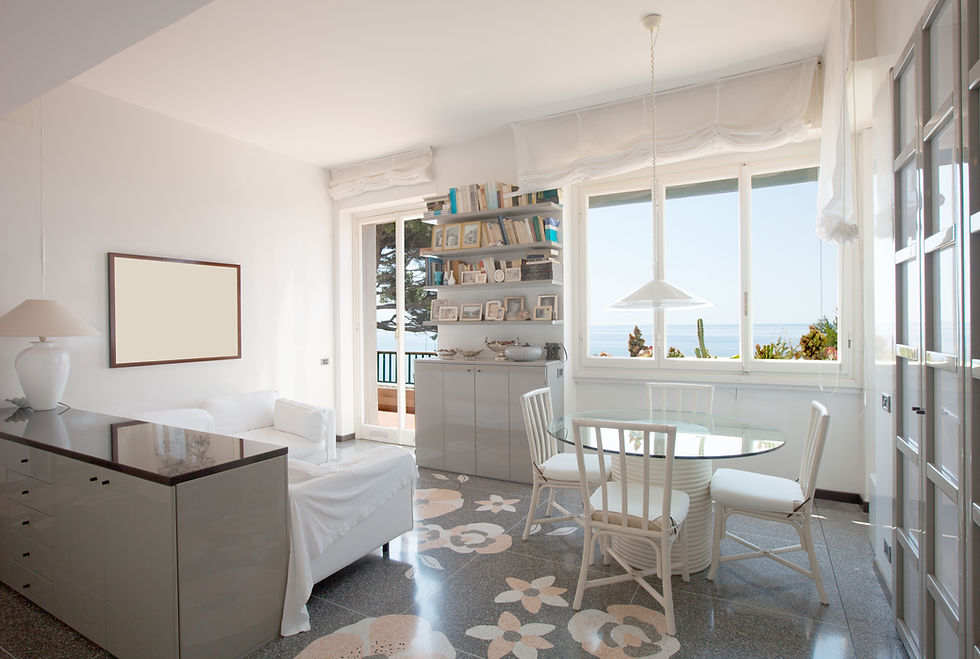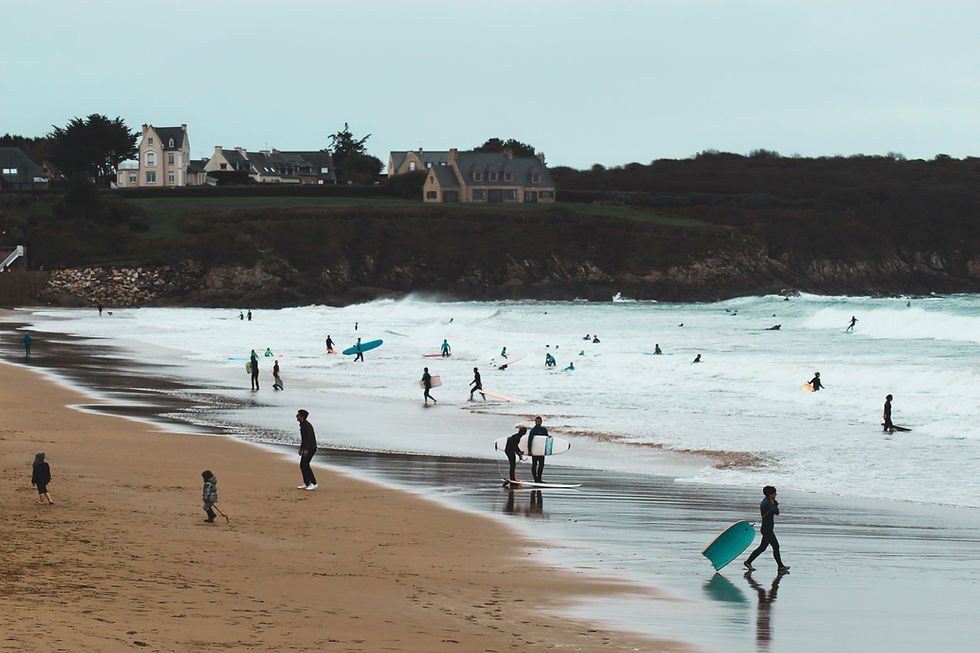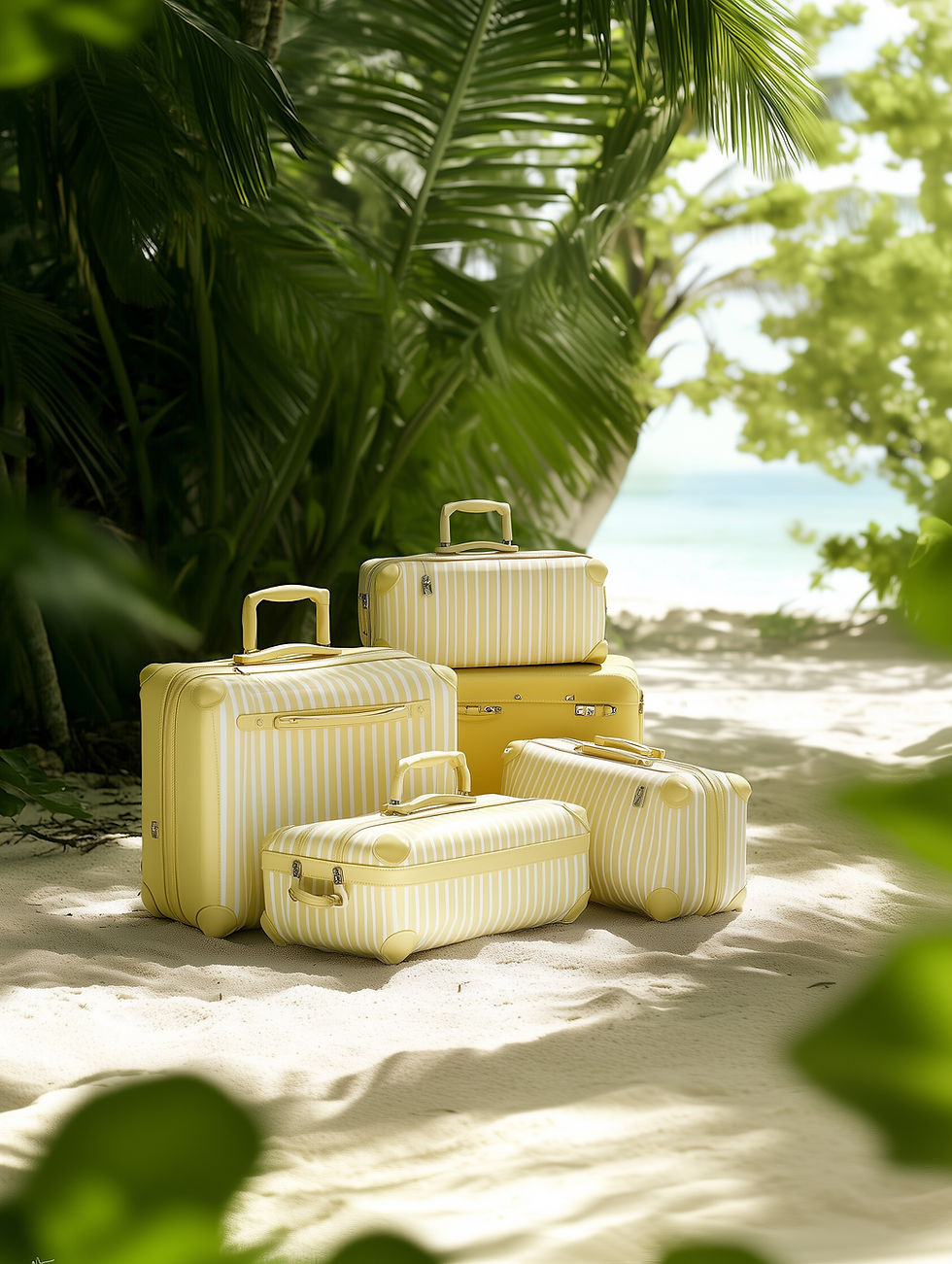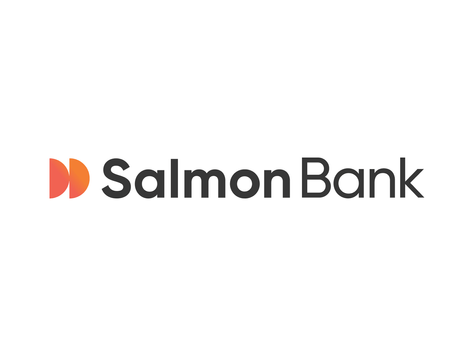Investing in a Seaside or Lakeside Property for Airbnb
- Aug 13
- 10 min read
BUSINESS
There’s a particular kind of music in the lapping of waves, the hush of wind through tamarinds, the slow, honest clink of glasses at sunset. Invest in the right slice of shoreline or lakeside, and you’re not only buying a roof and walls — you’re buying a seasonal chorus line of guests who will pay to sit in that music. This is an affectionate, practical, streetwise primer on how to turn a seaside or lakeside property into a steady Airbnb income stream. Think of it as part travelogue, part business plan, and part bedside manner for guests — all told in the warm, plainspoken rhythms you asked for.

I’ll take you from the first heartbeat of interest — why do this — through picking the place, financing, the work of making it sing, how to price and market it, and how to treat each guest like a returning friend. I’ll also drop concrete economic examples so you can see numbers that matter, and cite recent market data so you’re not floating on warm air.

Why a waterfront Airbnb?
Waterfront properties sell themselves: people crave views, breezes, sand underfoot, and the illusion of escape. Short-term rentals in tourist zones tend to command higher nightly rates than typical urban apartments because they deliver experience, not just shelter. That premium is real: market data shows that short-term rentals — especially in vacation towns — often enjoy substantially higher average daily rates (ADR) and seasonal occupancy bumps compared to inland, non-vacation markets.

(AirDNA)
But a word of caution before you fall entirely in love: seaside properties are also exposed — physically and financially. Weather, maintenance, competition, and regulations can blunt returns if you’re unprepared. Treat this like farming that pays you in small, frequent harvests: it needs planting, tending, and honest bookkeeping.

Step 1 — How to start: scouting and buying the right property
Pick the market, not the listing. Don’t buy a house because of one pretty photo. Buy for the market: is the town a weekend magnet? Does it have year-round attractions (surfing, festivals, diving, fishing, hiking) or is it purely seasonal? A property in a place with steady shoulder-season demand reduces vacancy risk. Use local listing platforms and market-data dashboards (AirDNA, market dashboards, local tourism boards) to measure typical occupancy and ADR for similar listings.

Type matters: A compact, well-designed two-bedroom near the sand often out-earns a big, poorly maintained four-bedroom a kilometer inland. Smaller properties with flexible sleeping arrangements and a strong outdoor space transform more easily into high-occupancy performers.

Location micro-factors: beachfront vs. within-block vs. bayfront — each has a different price premium and different guest expectations. Proximity to restaurants, parking, public transport, and the town center matters. Noise and local rules (e.g., homeowner association restrictions) matter even more.

Inspect cleverly: salt and humidity accelerate rot, rust, mold. Check roofing, electrical, HVAC, plumbing, termite history. Factor in coastal-grade materials or the need to retrofit. A property that looks cheap on paper can demand high upkeep costs.

Legal and zoning check: short-term rental legislation is changing fast in many beach towns. Speak with the local municipal planning office and a real-estate lawyer. Don’t assume you can list the property immediately. Fines and forced de-listings are real risks.

Step 2 — Financing and the numbers that decide
Let’s put some digits on the board so we get practical.
Scenario A — modest seaside 2-bedroom in a tourist town (example, not a promise):
Purchase price: ₱8,000,000 (eight million pesos).
Down payment: 20% = ₱1,600,000. (Calculate: 8,000,000 * 0.20 = 1,600,000.)
Mortgage principal financed: ₱6,400,000. (8,000,000 − 1,600,000 = 6,400,000.)
Interest rate assumption: 7% annual, 15-year term (local rates vary; check your bank).
Monthly mortgage payment (approx): we’ll ballpark — the monthly payment on ₱6,400,000 at 7% for 15 years is about ₱57,000. (You should run precise amortization with current bank rates.)
Revenue scenario (conservative):
Average nightly rate (ADR): ₱8,000 (roughly $140) — coastal ADRs vary widely; US coastal ADRs in some resort towns show ADRs of $200–$330, but local markets like the Philippines tend to have lower ADRs; you must localize this number.
(Airbtics | Airbnb Analytics, AirDNA)
Occupancy rate: 45% annual (that’s 0.45 × 365 days = 164.25 nights ≈ 164 nights booked). For many vacation spots, occupancy ranges from ~30% (off-peak) to 60–70% (very hot markets) — know your market.
(AirDNA, Airbtics | Airbnb Analytics)
Compute gross annual revenue:
Nights booked: 164 nights.
Gross revenue: 164 nights × ₱8,000/night = ₱1,312,000. (Do the multiplication step-by-step: 160 × 8,000 = 1,280,000; 4 × 8,000 = 32,000; sum 1,280,000 + 32,000 = 1,312,000.)
Expenses (annual, rough estimates):
Mortgage: ₱57,000/month × 12 = ₱684,000.
Cleaning and turnover (incl. laundry, supplies): estimate ₱150 per night × 164 nights = ₱24,600. (150 × 164 = 24,600.)
Platform fees (Airbnb host fees ~3% host-only or more depending on setup): assume 3% of bookings = 0.03 × ₱1,312,000 = ₱39,360.
Utilities, internet, cable, small replacement: ₱15,000/month × 12 = ₱180,000.
Maintenance, repairs, coastal wear & tear reserve: set aside 8% of gross revenue = 0.08 × ₱1,312,000 = ₱104,960.
Property management (if you hire someone to handle bookings, check-in, cleaning): 20% of gross revenue = 0.20 × ₱1,312,000 = ₱262,400 (or a fixed fee; management costs vary).
Now sum expenses:
Mortgage: 684,000
Cleaning: 24,600
Platform fees: 39,360
Utilities: 180,000
Maintenance reserve: 104,960
Management: 262,400Total expenses = 1,295,320. (Let’s add precisely: 684,000 + 24,600 = 708,600. +39,360 = 747,960. +180,000 = 927,960. +104,960 = 1,032,920. +262,400 = 1,295,320.)
Net operating income before taxes = Gross revenue − Total expenses= ₱1,312,000 − ₱1,295,320 = ₱16,680.
That’s practically break-even in year one under these conservative assumptions. The lesson: modest occupancy and high mortgage bite can leave little margin. But — and this is the gasoline-on-fire point — if you improve occupancy to 60% or push ADR to ₱10,000, the math shifts dramatically.
Scenario B — adjust to occupancy 60% and ADR ₱10,000:
Nights: 0.60 × 365 = 219 nights (0.60 * 365 = 219).
Gross: 219 × ₱10,000 = ₱2,190,000.
Apply same expense percentages (some expenses scale): platform fees 3% = ₱65,700. Cleaning 150 × 219 = ₱32,850. Management 20% = ₱438,000. Maintenance 8% = ₱175,200. Utilities maybe a bit higher, say ₱200,000.
Mortgage still ₱684,000.Total expenses: 684,000 + 32,850 + 65,700 + 200,000 + 175,200 + 438,000 = ₱1,595,750. (Compute stepwise: 684,000 + 32,850 = 716,850. +65,700 = 782,550. +200,000 = 982,550. +175,200 = 1,157,750. +438,000 = 1,595,750.)Net = 2,190,000 − 1,595,750 = ₱594,250.
That’s a much healthier margin — nearly ₱600k/year. This illustrates the levers: occupancy × ADR and effective management costs determine whether your property earns pocket money or bankrolls a new venture.
Market data: in some established vacation towns in the U.S., a typical listing reports occupancy rates ~50–56% with ADRs in the hundreds of dollars — producing tens of thousands of dollars in revenue annually for average performers. But local markets like San Juan Beach (Philippines) show much lower median occupancy in recent measurements (e.g., ~32% on a sampled year), underscoring the need to analyze your specific town, seasonality, and competition.

Step 3 — What to do next: renovation, design, and furnishing
If buying is step one, design and ops are the relentless second.
1) Design for the camera. The first five seconds of a booking decision are visual: crisp photos, natural light, a tidy deck. Decks and outdoor spaces sell waterfront listings. Put comfortable, weather-proof outdoor furniture. Use plants, warm lighting, and minimalist clutter-free interiors.

2) Durable, coastal materials. Use stainless fixtures, powder-coated rails, treated wood, house-grade tile, and marine varnish where necessary. Invest in good windows and dehumidifiers — mold is a silent profit eater.

3) Practical comforts. Fast internet, good mattresses, blackout curtains, a small welcome kit (coffee, tea, bottled water), and clear info packets win repeat bookings and five-star reviews.

4) Safety & liability: Provide life jackets if you’re near open water, clear signage about currents, and a small first-aid kit. Check insurance clauses for short-term rental coverage.

5) Optimize layout for more guests. Flexible sleeping arrangements (sofa bed, bunk beds, twin master), a clever kitchenette, and ample storage make a two-bedroom feel like a family-sized rental.

Step 4 — Pricing, channels, and seasonality
Airbnb is a channel, not a strategy.
Channel mix: List on Airbnb, but also consider Booking.com, Agoda, and local travel marketplaces. Diversify to fill shoulder seasons. But understand each platform’s fee structure and guest expectations.
Dynamic pricing: Use tools or a property manager that applies dynamic pricing by day, week, and special events (holidays, festivals, surf competitions). In high-demand weeks, raise ADR; in slow weeks, grab occupancy with weekly discounts.
Minimum stay strategy: For high turnover markets, a 2-night minimum is often optimal; for remote places that incur long travel, use 3–4 nights. Weekly discounts attract families and reduce cleaning frequency per night.
Special offers & packages: Offer fishing excursions, paddleboard rentals, island-hopping pickup, or sunrise breakfast packages with local partners. Packages can increase ADR and create memorable reviews.
Beware the race-to-the-bottom: Competing purely on price triggers a downward spiral. Instead, differentiate with experience and small local touches (welcome snacks, curated guidebooks).
Market data shows ADRs and occupancy shift with seasons and markets: summer months in temperate countries and dry season months in tropical destinations drive ADR and occupancy spikes. In many U.S. seaside towns, occupancy climbs into 60–70% during high season; in some Philippine beach towns the occupancy profile is more event- and holiday-driven, producing sharp peaks and deep troughs. Use local occupancy dashboards to plan.

Step 5 — Marketing: how to get eyes and bookings
Photos that tell a story. Hire a professional photographer who shoots early morning and golden hour. Include lifestyle shots: breakfast on the balcony, feet in the sand, a family on the deck. Photos must match the text.
Listing copy that sells emotion. People don’t book square footage — they book mornings. Use sensory words: “sip coffee as the morning light paints the bay,” “walk three minutes along powder sand,” “local sari-sari for snacks.” Make the listing readable, honest, and full of small details (parking, proximity to leche flan vendor, evening mosquito advice).
SEO & keywords: Put target phrases in the headline and first 100 words: “Beachfront 2BR,” “Sunset Deck,” “Near Surf Break.” Guests search by “beachfront,” “ocean view,” and “near [town].” Use the region name and attractions.
Social proof acceleration: Encourage guests to leave reviews (politely ask on checkout). Reply to reviews publicly to show hospitality. Use guest photos (with permission) on your own Instagram to build a following.
Local partnerships: Work with local resorts, dive shops, boat captains, and cafes. Cross-promotions and referral deals drive traffic and create memorable add-ons.
Email remarketing: Collect guest emails (with permission) and offer returning-guest discounts for shoulder season stays. Repeat guests are the highest-margin bookings.
Paid ads sensibly: Use paid social ads during shoulder season launches or for last-minute fill-ins. Target travelers who visited your region or fans of “surf, sun, seafood” style pages.

Step 6 — How to treat guests (hospitality that converts to revenue)
Hospitality is the secret sauce; it’s cheaper than marketing.
Clear, warm communication. Reply within an hour. Give precise arrival instructions and local tips. Automated check-in messages save time, but always follow with a personal note.
First impressions matter. A clean home with a small welcome basket (locally made snacks, coffee, and a short handwritten note) triggers higher ratings.
Anticipate needs. Beach towels, a shoe rack, a drying rack for swimsuits, sunscreen, bug spray, and a safe for valuables — these small conveniences produce outsized goodwill.
Handle problems with empathy. If there’s a plumbing glitch or a storm, be transparent, offer quick fixes, and if appropriate, offer partial refunds. Guests remember how you handle trouble more than they remember the trouble itself.
Curated local guidebook. Leave a binder or a digital guide with: emergency numbers, recommended restaurants (with price ranges), sunrise/sunset spots, where to rent snorkel gear, and house rules written in friendly, specific language.
Nudge for reviews and referrals. After checkout, send a short note thanking them and gently ask for a review if they enjoyed the stay. Consider offering a small discount on a future stay for returning guests.

Operations: cleaning, maintenance, and insurance
Standardize cleaning checklists. Have a detailed cleaning checklist and a reliable cleaning crew. Fast turnarounds depend on efficient, consistent cleaning.
Maintenance schedule. Replace linens on a schedule, check appliances monthly, and keep a reserve fund for the inevitable coastal corrosion.
Insurance & compliance. Don’t skimp on insurance. Short-term rental endorsements or hosts’ policies that cover guest injury, losses, and property damage are essential. Check tax implications for your country: many jurisdictions tax short-term rental income differently than long-term rent.

The hard truth about margins and scale
Short-term rentals often look great in headlines — a "host earns $4,300/month!" stat jumps out. But averages mask dispersion: many hosts earn modest supplemental income, a few earn six-figure revenues, and many owners barely break even in year one. In U.S. markets, the average monthly revenue for active listings has been reported around $4,300 in some AirDNA tallies, with many high-performing coastal listings generating well above-average ADRs and occupancy when properly managed. (AirDNA, Business of Apps)
Two practical rules:
Leverage scale. One property is a tough egg to carry. Two or three with similar operations share cleaners, management software, and brand power.
Design to capture premium price. Sometimes a modest investment in furniture, a few signature touches, and top-tier photography can raise ADR by 15–30% — and that's more effective than lowering price to chase occupancy.

Pricing examples revisited (quick cheat-sheet)
If you want quick mental models:
Conservative model: ADR × occupancy (nights) = gross revenue. Subtract mortgage, utilities, cleaning, platform fees, maintenance, property management. Expect slim margins until you hit either higher ADR or higher occupancy.
Growth model: Invest in marketing, design, and partnerships to push occupancy >55% and ADR +15–25%, and your net can pivot from break-even to solid profit.
Market snapshots: some resort towns in the USA show median occupancies of ~50–56% and ADRs $200–$330 (producing annual host revenues often in the tens of thousands). But comparably, select Philippine beach towns can show median occupancies of ~30–35% in certain measurement windows, highlighting the importance of local research before you anchor your assumptions.

Risk checklist (don’t skip this)
Regulatory change risk: New short-term rental bans or taxation can change returns quickly.
Seasonality risk: Heavy peaks and thin lows require cashflow planning.
Weather risk: Hurricanes, typhoons, or erosion can damage property and destroy booking windows.
Competition risk: New condo developments, resorts, or large-scale vacation rental managers can reduce ADR and occupancy.
Operational risk: If your cleaning or management fails, reviews collapse faster than bookings rebuilt.

How to scale and brand your waterfront rentals
Turn listings into a tiny brand. Consistent photography, the same style of furnishings, and a small line of add-ons (kayak rental, sunrise express breakfast) create a predictable guest experience.
Host-only website & direct bookings. Once you have a few properties, create a simple site for direct bookings (lower fees). Use OTA listings to fill last-minute inventory and drive initial discovery.
Branded loyalty. Offer returning-guest perks — discounts, early check-in, or free breakfast — to drive repeat bookings. Loyal guests shorten your marketing spend per booking.
Outsource to a local operator. If you expand, hire a trustworthy operations lead or a local co-manager to handle logistics. Software platforms (channel managers, dynamic pricing) will help unify calendars.

Beyond income: the soul of a seaside rental
Investing in waterfront property is not merely financial engineering; it is stewardship of place. Guests come to slow down, to re-anchor for a moment. If you run your rental like a careworn hotel, you might earn, but you won’t inspire return visits. The hosts who succeed are the ones who treat their property as a living room for the world — clean, hospitable, and honest.
Be realistic about the math; be ambitious about the experience. Crunch the numbers early, but spend your creative energy on the things money doesn’t buy: thoughtful hospitality, local connections, and the small rituals that make people say, “I’ll come back again.”















